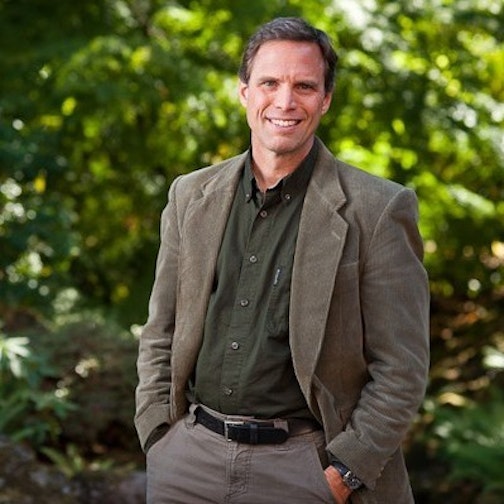Goodbye Holocene, Hello Anthropocene?
The Moral of the Story

-
-
Share
-
Share via Twitter -
Share via Facebook -
Share via Email
-
On July 11, readers of The New York Times may have noticed an important news item: “The Human Age Has a New Symbol. It’s a Record of Bomb Tests and Fossil Fuels.” The story is about the Anthropocene—a proposed new geological epoch recognizing the profound role of humans in transforming Earth—and a recent recommendation of a panel of scientists on how to establish its baseline in time.
I, alongside dozens of others, serve as a Senior Fellow of The Breakthrough Institute. You may think I’d be delighted by this announcement. Since at least the fall 2011 issue of Breakthrough Journal, the notion of Earth as shaped in large part by human action has been central to the Breakthrough message, as contrasted with a largely hands-off notion prevalent in classic environmentalism. Since then, the Anthropocene has featured prominently in Breakthrough publications, running all the way to the latest Journal, where Jennifer Bernstein also reflects on the Anthropocene as a proposed epoch. But, in fact, some of us worry that the scientists’ recommendation may convey the wrong moral to the story.
To understand this most recent chapter in discussion and debate over the Anthropocene, one must think like the kind of scientist who made the recommendation: stratigraphers. To a stratigrapher, Earth’s long history can be summarized via rocks, sediments, and other layered strata, with more recent events deposited on top of older events. To declare the Anthropocene an epochal successor to the Holocene—itself a successor to the Pleistocene, following the climate-induced glacial retreat of roughly 10,000 years ago—one must place a “golden spike” (formally, a Global boundary Stratotype Section and Point or GSSP) identifying its approximate year of origin, and where a definitive record in strata might be found.
As the ideal stratigraphic site of record for the Anthropocene, the panel recommended Crawford Lake in Ontario, Canada, where deep sediments at bottom reveal their recommended GSSP dating from the mid-20th century. The golden spike would be (figuratively) driven at the point of worldwide deposition of nuclear bomb fallout and increased fossil fuel combustion byproducts. According to this panel’s recommendation, then, the Holocene ceded to the Anthropocene around 1950.
Yet many of us are not stratigraphers. As we read about the Anthropocene epoch, we are keen to understand the moral of the story: do we celebrate this proposed new geological epoch as the mastery of human civilization over nature? Do we approach it as a mixed moral lesson, with some goods and some bads? Or do we wring our hands at this mid-20th century moment that launched the human desecration of Earth? We have long debated the moral to the Anthropocene story, as I wrote some ten years ago, with popular literature generally leaning toward hand-wringing.
Yet there has been some cautious celebration as well. As one example of the latter, that Breakthrough Journal issue of 2011 put a positive spin on the Anthropocene with essays including “Love Your Monsters” by former Breakthrough Senior Fellow Bruno Latour, “Conservation in the Anthropocene” by Senior Fellows Michelle Marvier and Peter Kareiva, and “Planet of No Return” by Senior Fellow Erle Ellis. The introductory essay, “Evolve,” by Breakthrough co-founders Ted Nordhaus and Michael Shellenberger, adopted a tone of realism in wrestling with the moral of the Anthropocene: “What we call ‘saving the Earth’ will, in practice, require creating and re-creating it again and again for as long as humans inhabit it.”
The moral of the Anthropocene story is an unsettled one: even the term “Anthropocene” has been challenged, implicitly blaming undifferentiated humanity for Earth’s transformation instead of a certain half of our species (“Manthropocene”) or certain economic systems (“Capitalocene”). Yet there are recurrent stories we tell over and over again. The environmental historian William Cronon once argued that we only really have two stories about human impacts on Earth: a declensionist one, where humans have fallen from some idyllic past, and a progressive one, in which humans overcome nature’s adversities. Their morals are clear, and arguably simplistic: as Cronon notes, no one can tell the full story about anything. Given the huge diversity of human impacts on Earth over space and time, it is easy to select some that convincingly tell a declensionist story and others that support a progressive story.
But driving a golden spike in the stratigraphic record around the year 1950 may result in the wrong moral to this story—at least one that runs counter to a more cautiously hopeful Breakthrough message. It fits an overarching declensionist narrative: Earth was once in balance [let us momentarily set aside asteroid impacts, glacial events, and other extra-human disturbances], then humans showed up, and by the mid-20th century Great Acceleration we wrested control of Earth’s steering wheel from Mother Nature, careening wildly ever since.
But for those who read time and space differently, this moral makes little sense. Breakthrough Senior Fellow Erle Ellis, a member of the scientific panel, joined other co-authors in challenging their golden spike approach, arguing that the Anthropocene ought to be characterized as a longstanding and globally differentiated event, not a discrete-origin and globally uniform epoch. Humans have indeed impacted Earth, but searching for a golden spike demarcating the launch of the Anthropocene strikes geographers like Erle (or me) as ludicrous, given the long history of human transformations of nature—think agriculture, or deforestation, or mining, or transportation, or commerce, or many other longstanding processes. We have co-evolved with Earth, and Earth with us, to the point where the notion of nature—and of culture—are blurred. Geographers may be more comfortable than stratigraphers with this fact; we have no need to drive a golden spike.
That’s what some of us mean by the Anthropocene. Upon this longstanding reality, we must look for ways to move forward, not for recovering some pristine past. But it is also important to acknowledge that recent human transformations of Earth in modernity have not been unconditionally good: modernity confers progress, yes, yet also uncertainty and risk. Perhaps Latour, citing that famous novel about Dr. Frankenstein, said it best in his “Love Your Monsters” essay:
Written at the dawn of the great technological revolutions that would define the 19th and 20th centuries, Frankenstein foresees that the gigantic sins that were to be committed would hide a much greater sin. It is not the case that we have failed to care for Creation, but that we have failed to care for our technological creations. We confuse the monster for its creator and blame our sins against Nature upon our creations. But our sin is not that we created technologies but that we failed to love and care for them.
Love your monsters: this may be the most honest, even hopeful, moral to the Anthropocene story. Monsters, like Dr. Frankenstein’s creation, may only appear monstrous and bad; we have always created monsters. They are part of us. Perhaps the Anthropocene means that it is time to give them love.
